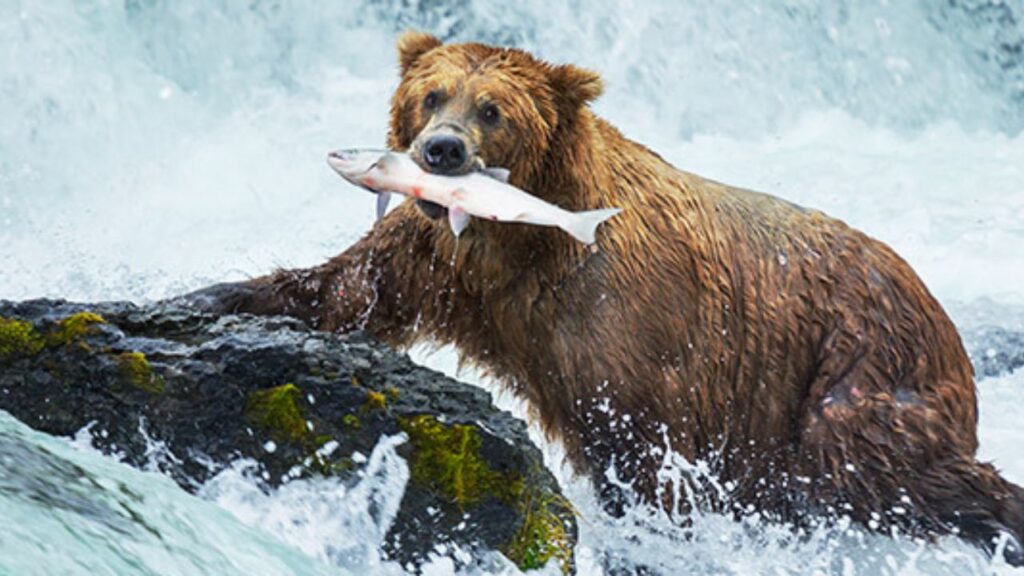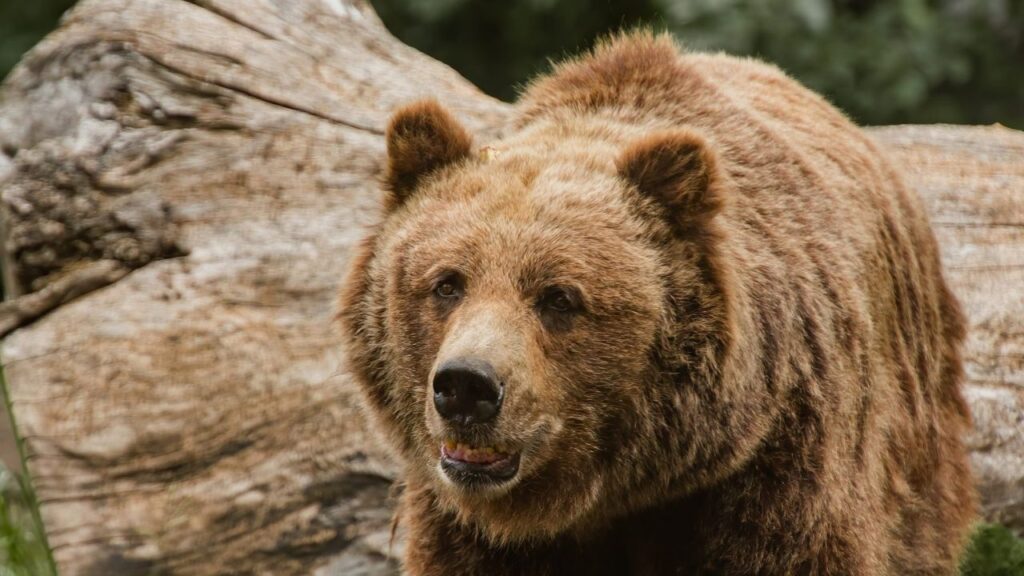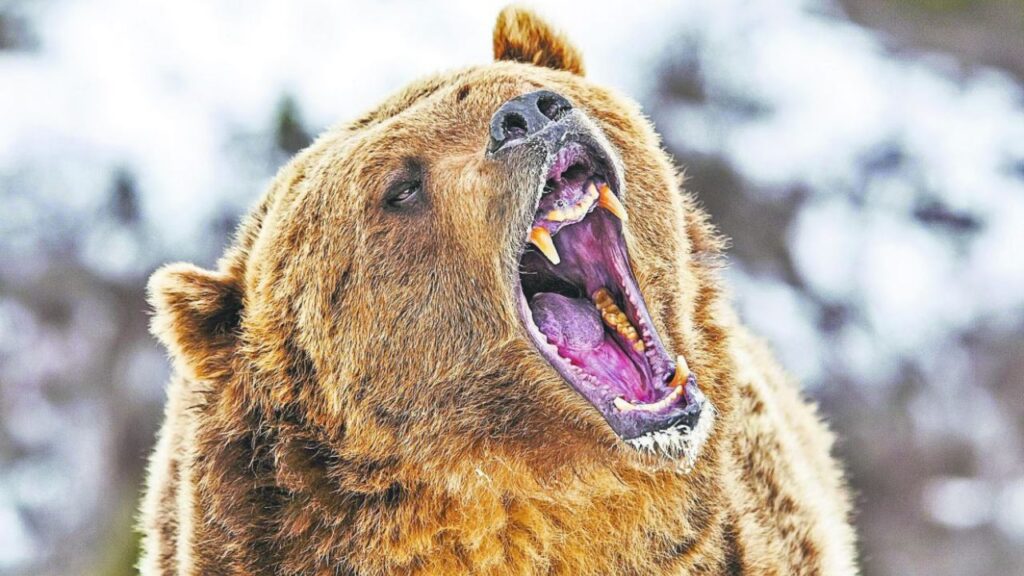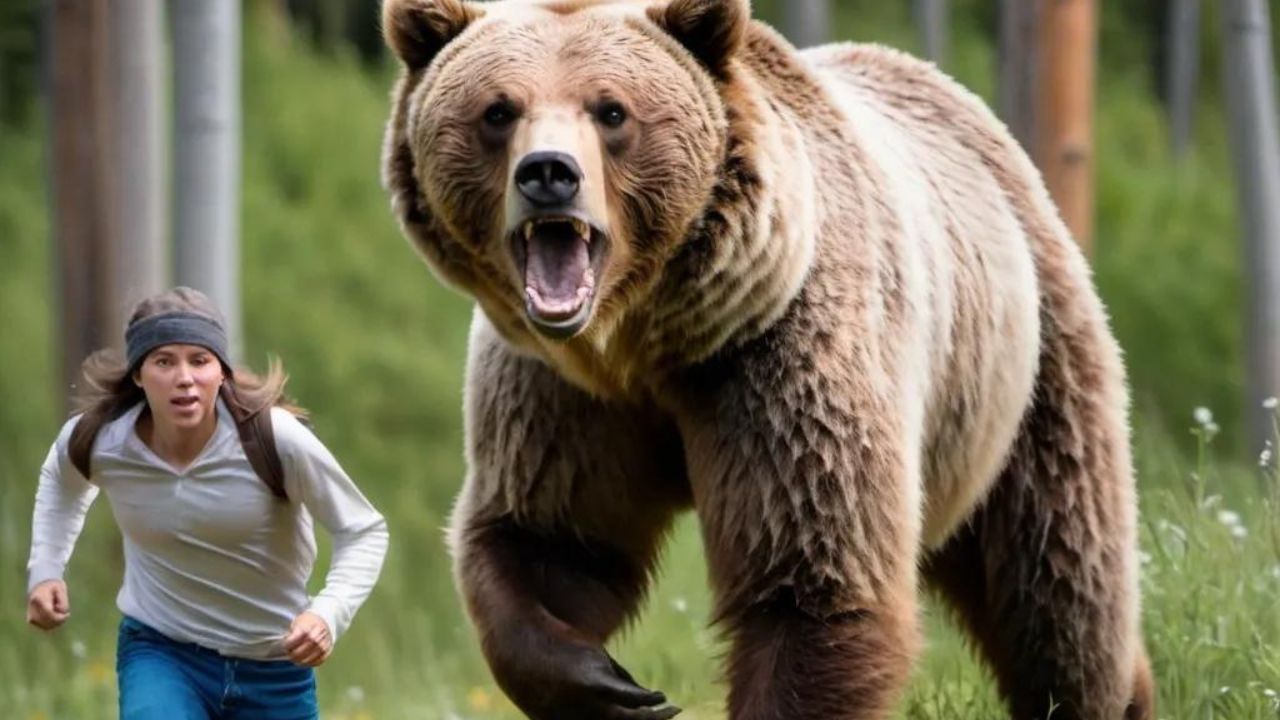Do Grizzly Bears Attack Humans? Grizzly bears do attack humans, but such incidents are rare and usually occur when the bear feels threatened or surprised.
Grizzly bears, also known as Ursus arctos horribilis, are majestic and formidable creatures that have fascinated and intimidated humans for centuries.
Known for their sheer size, power, and distinctive features, these bears primarily inhabit remote areas in North America, but with more people venturing into bear territory for hiking, camping, and other outdoor activities, encounters with grizzlies are becoming more common.
This raises a critical question: do grizzly bears attack humans? While these incidents are rare, they do happen, and understanding why and how these encounters occur is key to preventing dangerous situations.
This article delves into the factors that lead to grizzly bear attacks, the frequency and severity of such incidents, and the steps you can take to avoid them. [Do Grizzly Bears Attack Humans?]
By exploring the behavioral patterns of these magnificent animals, we can better understand how to coexist with them peacefully and minimize the risks of bear encounters.
Contents
What Are Grizzly Bears?
1. Physical Characteristics of Grizzly Bears
Grizzly bears are a subspecies of the brown bear, known for their massive size and distinctive features. Adult males typically weigh between 400 and 800 pounds, while females are slightly smaller.
Some grizzlies can grow even larger, with individuals exceeding 1,000 pounds recorded in the wild. [Do Grizzly Bears Attack Humans?]
They are characterized by their muscular build, large, rounded heads, and a prominent shoulder hump, which is actually a mass of muscle that gives them incredible strength for digging and foraging.
Grizzly bears also have long, sharp claws, which can grow up to four inches in length. These claws are perfectly adapted for digging up roots and insects, but they also make the bear a powerful predator when necessary.
Their fur ranges from dark brown to lighter shades of blonde, often with grizzled or frosted tips, giving them their iconic “grizzly” appearance.
2. Habitat and Range
Grizzly bears are primarily found in North America, with the largest populations located in Alaska and western Canada. [Do Grizzly Bears Attack Humans?]
In the continental United States, they are commonly found in Montana, Wyoming, and Idaho, especially in national parks like Yellowstone and Glacier.
Grizzly bears inhabit a range of environments, including dense forests, alpine meadows, and river valleys. They require vast territories to roam, hunt, and forage, with individual bears often covering hundreds of square miles.
However, human encroachment into these areas has led to more frequent encounters between grizzlies and people.
As their habitats overlap with popular hiking and camping areas, understanding bear behavior becomes crucial for avoiding potentially dangerous situations.

Do Grizzly Bears Attack Humans?
1. Why Do Grizzly Bears Attack Humans?
While grizzly bears are generally not aggressive toward humans, they may attack under certain circumstances. [Do Grizzly Bears Attack Humans?]
Most grizzly bear attacks occur not because the bear is seeking out humans as prey, but because they feel threatened or startled. Unlike predatory animals, grizzlies are typically defensive in their behavior toward humans.
There are several key reasons why a grizzly bear might attack:
- Defending Their Young: Grizzly bear mothers, or sows, are extremely protective of their cubs. If a person inadvertently comes too close to a cub, the mother will likely perceive this as a threat and may attack in defense of her offspring.
- Protecting Their Food: Grizzlies are opportunistic feeders and may become aggressive when they feel their food source is at risk. Bears that are feeding on a carcass, fish, or other food may react violently if a human gets too close.
- Surprise Encounters: Most bear attacks happen when the bear is surprised at close range. Bears have an excellent sense of smell but relatively poor eyesight, so if they are startled by a human—especially in dense brush or around a blind corner—they may react with aggression out of fear.
- Habituation to Humans: In some cases, bears that have become habituated to humans—often due to being fed by people—can be more likely to approach and potentially attack. These food-conditioned bears may associate humans with food, increasing the chances of an encounter turning dangerous.
2. Common Situations That Lead to Grizzly Bear Attacks
- Hiking in Dense Vegetation: When hiking through thick forests or along trails with limited visibility, bears may not be aware of your presence until you’re too close for their comfort, leading to a defensive reaction.
- Camping Near Bear-Active Areas: Campers who fail to properly store their food or inadvertently leave food remnants out may attract bears. A bear that associates campsites with food is more likely to approach humans and could become aggressive if it feels threatened or cornered.
- Fishing or Hunting Near Bears: Bears are natural hunters and scavengers, often feeding on fish, deer, and other prey. If you are hunting or fishing in bear country, there’s a risk of encountering a bear that is also searching for food. Bears may see humans as competitors for these food sources and react aggressively.
- Startling a Bear While Mountain Biking: Mountain bikers in bear country should be especially cautious. Biking trails often cut through dense forests or meadows where visibility is limited. A bear surprised by a fast-approaching cyclist may charge out of fear or confusion.
3. How Often Do Grizzly Bear Attacks Occur?
Although the idea of a grizzly bear attack is terrifying, these incidents are exceedingly rare. In fact, grizzly bears typically avoid humans when possible. [Do Grizzly Bears Attack Humans?]
According to data from the National Park Service and wildlife agencies, fewer than one person per year is killed by a grizzly bear in North America, despite millions of people visiting bear country annually.
The chances of being attacked by a grizzly bear are incredibly low compared to other risks. For example, you’re more likely to be injured by a domestic dog or struck by lightning than attacked by a bear.
This does not mean the risk should be ignored, but it puts the danger into perspective—most bears are more interested in avoiding humans than confronting them.

Are Grizzly Bear Attacks Dangerous?
1. Severity of Grizzly Bear Attacks
Grizzly bear attacks can be deadly due to the animal’s size and strength. An attack typically involves the bear using its powerful claws to swat or strike the victim, causing serious injuries such as deep lacerations, broken bones, and even life-threatening trauma.
In some cases, grizzly bears will bite, and their large teeth can puncture deeply into flesh and bone. While the bear is not necessarily trying to kill or eat the person, its natural defenses make even a short-lived attack extremely dangerous.
However, many bear attacks are brief and end once the bear perceives the human is no longer a threat. Bears, particularly those acting defensively, may retreat after delivering a few blows or bites if the person plays dead and does not pose further danger.
2. Survival Rates in Bear Attacks
Although grizzly bear attacks can be severe, many people survive these encounters. The survival rate largely depends on the individual’s preparedness and ability to remain calm during the attack.
Bear spray has been shown to be highly effective in deterring attacks, with studies indicating that it can reduce the severity of encounters by causing the bear to retreat before inflicting serious injury.
Survivors of bear attacks often report that playing dead—lying face down, covering the neck, and remaining still—helped prevent further aggression from the bear.
This technique works because the bear may believe the threat has been neutralized and lose interest. [Do Grizzly Bears Attack Humans?]

How to Avoid a Grizzly Bear Attack
1. Bear Awareness and Safety Tips
One of the best ways to avoid a grizzly bear attack is to stay aware and take precautions when traveling through bear country. Here are some important tips:
- Make Noise: Bears are less likely to attack if they are aware of your presence. While hiking, talk loudly, clap your hands, or use bear bells to make noise, especially in areas with limited visibility. This reduces the chances of surprising a bear at close range.
- Hike in Groups: Bears are less likely to approach large groups of people. If possible, hike with others and stick together, particularly in areas known to have bear activity.
- Avoid Bear Habitats at Dawn and Dusk: Grizzly bears are most active during the early morning and late evening. Avoid hiking during these times, and be extra vigilant if you do.
2. Proper Use of Bear Spray
Bear spray is one of the most effective tools you can carry to protect yourself in the event of an encounter. [Do Grizzly Bears Attack Humans?]
It is a form of pepper spray specifically designed to deter large animals like bears. When used properly, it can create a large cloud of capsaicin that irritates the bear’s eyes, nose, and lungs, forcing it to retreat.
To use bear spray effectively:
- Keep it Accessible: Store your bear spray in a holster on your belt or backpack strap, not in your bag. You need to be able to grab it quickly if a bear charges.
- Aim for the Bear’s Face: Spray when the bear is within 20 to 30 feet, aiming for its face to ensure the most effective deterrence.
- Practice Ahead of Time: Before heading into bear country, familiarize yourself with how to use bear spray by practicing with an inert canister. This will help you feel more confident and prepared during a real encounter.
3. What to Do if You Encounter a Grizzly Bear
If you encounter a grizzly bear, your reaction can make all the difference:
- Stay Calm: Do not panic or run. Running can trigger the bear’s chase instinct, making the situation worse.
- Slowly Back Away: Keep your eyes on the bear but avoid direct eye contact, which can be interpreted as a challenge. Slowly back away while talking in a calm voice.
- Play Dead if the Bear Charges: If the bear makes contact, play dead by lying face down, covering your neck with your hands, and remaining still. This signals to the bear that you are not a threat.
Final Verdict
Grizzly bear attacks on humans, while alarming, are rare and typically defensive in nature. [Do Grizzly Bears Attack Humans?]
By taking proper precautions, understanding bear behavior, and being prepared with tools like bear spray, you can significantly reduce the risk of an encounter.
Respecting the natural habitat of these magnificent animals is essential to safely enjoying the great outdoors.
See Also: Do Tigers Attack Humans? Lurking in the Wild
FAQs
Are grizzly bears more aggressive than other bears?
Yes, grizzlies are generally more aggressive and protective, especially when defending their cubs or food. [Do Grizzly Bears Attack Humans?]
What should I do if I see a grizzly bear in the distance?
Back away slowly without making sudden movements. Give the bear plenty of space and avoid blocking its path.
Can grizzly bears be deterred with loud noises?
Loud noises can help deter a bear before it sees you. However, if the bear is already charging, bear spray is a more effective deterrent.
How can I protect myself when hiking in bear country?
Carry bear spray, make noise, hike in groups, and be vigilant when in bear territory. These precautions can significantly reduce the risk of an attack.
Do grizzly bears only attack humans for food?
No, most grizzly bear attacks are defensive and not predatory. They are usually a response to feeling threatened or startled.
Conclusion: Do Grizzly Bears Attack Humans?
Grizzly bears are powerful creatures that demand respect in their natural habitat. While attacks on humans are rare, they can occur when bears feel threatened or surprised.
By following safety guidelines, carrying bear spray, and being aware of your surroundings, you can safely enjoy the wilderness while minimizing the chances of a dangerous encounter with a grizzly bear.
Understanding and respecting these animals is key to peaceful coexistence in the wild. [Do Grizzly Bears Attack Humans?]

Hello, I am Rosa Ellis, a mother of two and a wildlife blogger. I grew up in New York City, but I love exploring forests. I’ve traveled to places like Yellowstone National Park and the Amazon Rainforest to see animals up close. I know a lot about animal behavior and which animals can be dangerous to humans. Thanks for visiting my blog!

